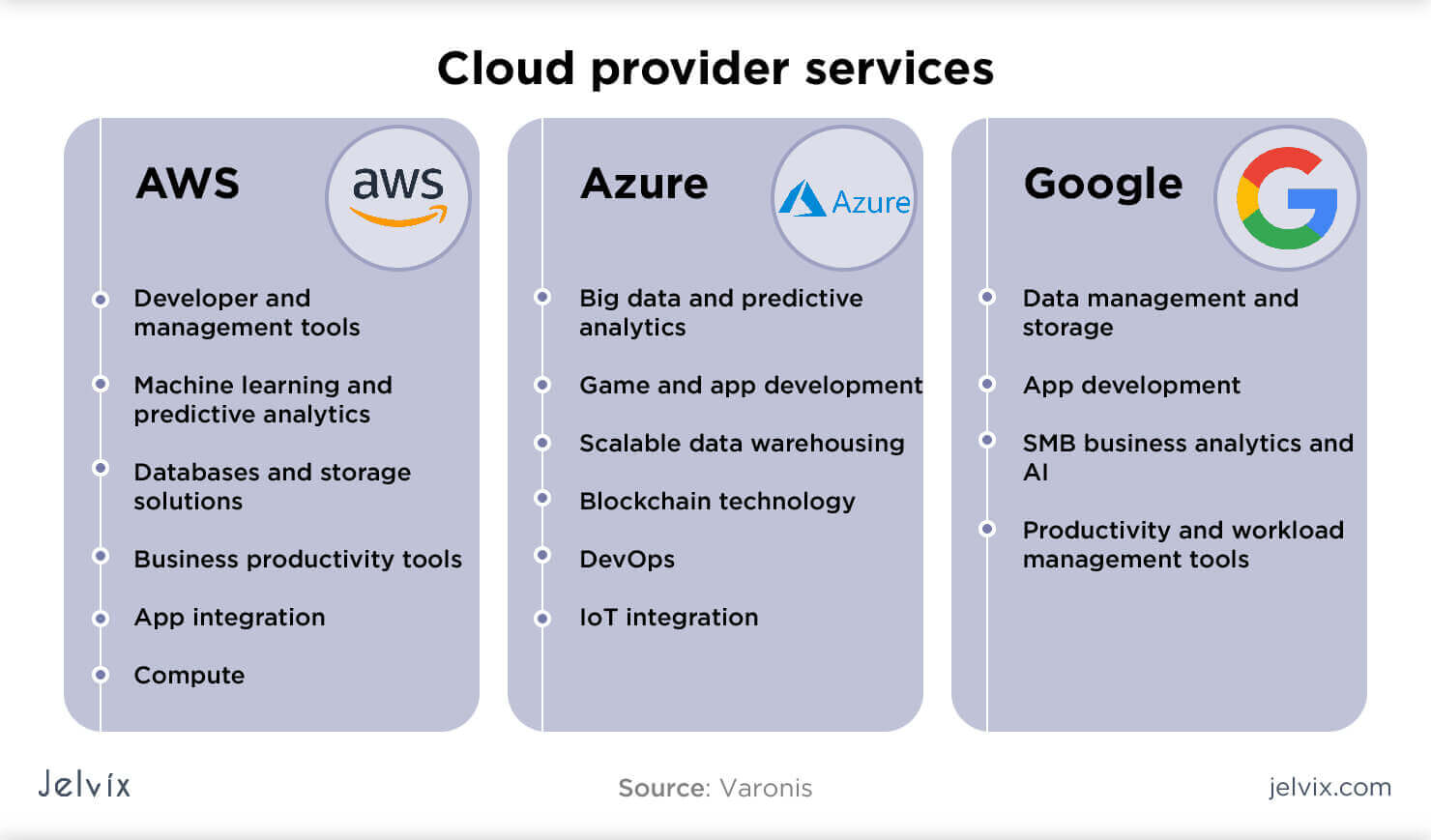What are Cloud Transfer Services?
Cloud transfer services refer to the process of moving data between on-premises storage systems and cloud storage environments. These services provide a convenient and efficient way to manage data, offering numerous benefits such as increased efficiency, cost savings, and improved security. With cloud transfer services, businesses and organizations can easily transfer large volumes of data, automate data migration tasks, and ensure data is backed up and protected in the cloud.
Cloud transfer services play a critical role in modern data management, enabling organizations to take advantage of the scalability, flexibility, and accessibility of cloud storage. By using cloud transfer services, businesses can reduce the time and resources required to manage data, freeing up staff to focus on other important tasks. Additionally, cloud transfer services provide a cost-effective solution for data management, allowing organizations to pay only for the storage they need and eliminating the need for expensive on-premises infrastructure.
One of the key benefits of cloud transfer services is improved security. By transferring data to the cloud, businesses can ensure that their data is protected by robust security measures, such as encryption, access controls, and regular backups. Cloud transfer services also provide a reliable disaster recovery solution, enabling businesses to quickly and easily recover data in the event of a data loss or system failure.
How to Choose the Right Cloud Transfer Service
When selecting a cloud transfer service, it is important to consider several key factors to ensure that you choose the best solution for your needs. Here is a checklist to help you make an informed decision:
- Compatibility: Ensure that the cloud transfer service is compatible with your existing systems and infrastructure. Consider factors such as file formats, data volumes, and network requirements.
- Security: Look for a cloud transfer service that offers robust security features, such as encryption, access controls, and regular backups. Ensure that the service adheres to industry standards and regulations, such as HIPAA or GDPR.
- Cost: Consider the cost of the cloud transfer service, including any fees for data storage, transfer, or retrieval. Look for a service that offers flexible pricing options, such as pay-as-you-go or subscription-based models.
- Ease of use: Choose a cloud transfer service that is easy to use and requires minimal setup or configuration. Look for a user-friendly interface, clear documentation, and responsive customer support.
Some popular cloud transfer services include AWS DataSync, Google Cloud Transfer Service, and Microsoft Azure Data Box. Each of these services offers unique features and benefits, so it is important to compare and contrast them to find the best fit for your needs.
Comparing Top Cloud Transfer Services
When it comes to cloud transfer services, there are several top options to choose from, each with its own unique features and benefits. Here is a comparison of some of the most popular cloud transfer services:
| Service | Features | Benefits |
|---|---|---|
| AWS DataSync | Fast, secure, and easy-to-use data transfer service that supports block storage, object storage, and tape gateways. Offers flexible pricing options and can be used to migrate data to and from AWS. | Cost-effective, reliable, and scalable solution for data transfer and migration. Can be used to automate data transfer tasks and reduce the time and resources required to manage data. |
| Google Cloud Transfer Service | Secure and automated data transfer service that supports block storage, object storage, and databases. Offers flexible pricing options and can be used to migrate data to and from Google Cloud. | Easy-to-use and scalable solution for data transfer and migration. Can be used to automate data transfer tasks and reduce the time and resources required to manage data. |
| Microsoft Azure Data Box | Secure and scalable data transfer service that uses physical devices to transfer large volumes of data to and from Azure. Offers flexible pricing options and can be used to migrate data to and from Azure. | Reliable and fast solution for data transfer and migration. Can be used to transfer large volumes of data quickly and efficiently, and reduce the time and resources required to manage data. |
When comparing cloud transfer services, it is important to consider factors such as compatibility, security, cost, and ease of use. By carefully evaluating each service, businesses and organizations can find the best solution for their data management needs.
Real-World Applications of Cloud Transfer Services
Cloud transfer services have become an essential tool for businesses and organizations looking to improve their data management. Here are some examples of how these services are being used in real-world applications:
- Data migration: Cloud transfer services can be used to migrate large volumes of data between on-premises storage systems and cloud storage environments. For example, a healthcare organization might use a cloud transfer service to migrate patient records from an on-premises storage system to a cloud-based electronic health record (EHR) system.
- Data backup and recovery: Cloud transfer services can be used to automate data backup and recovery tasks, ensuring that data is protected in the event of a data loss or system failure. For example, a financial services firm might use a cloud transfer service to back up critical financial data to a cloud-based storage system.
- Data integration: Cloud transfer services can be used to integrate data from multiple sources, creating a single source of truth for data analysis and decision-making. For example, a retailer might use a cloud transfer service to integrate data from multiple sales channels, creating a unified view of sales data for analysis and reporting.
- Hybrid cloud storage: Cloud transfer services can be used to create a hybrid cloud storage environment, allowing businesses to take advantage of the scalability and flexibility of cloud storage while keeping sensitive data on-premises. For example, a government agency might use a cloud transfer service to move non-sensitive data to a cloud-based storage system, while keeping sensitive data on-premises.
Here are some case studies and testimonials from real users of cloud transfer services:
- AWS DataSync Case Study: Media Company Migrates to the Cloud
- Google Cloud Transfer Service Case Study: Coca-Cola Hellenic Bottling Company Migrates to the Cloud
- Microsoft Azure Data Box Case Study: Schneider Electric Migrates to the Cloud
Best Practices for Using Cloud Transfer Services
Cloud transfer services offer numerous benefits for businesses and organizations looking to improve their data management. However, to get the most out of these services, it is important to follow best practices for using them. Here are some tips and best practices for using cloud transfer services:
- Plan your data transfer strategy: Before transferring data to the cloud, it is important to plan your data transfer strategy. This includes identifying the data that needs to be transferred, determining the frequency of data transfers, and selecting the appropriate cloud transfer service. By planning your data transfer strategy, you can ensure a smooth and successful data transfer process.
- Ensure data compatibility: When transferring data to the cloud, it is important to ensure that the data is compatible with the cloud transfer service. This includes checking that the data format is supported and that the data is in a format that can be easily transferred. By ensuring data compatibility, you can avoid data transfer errors and ensure a successful data transfer process.
- Implement data backup and recovery procedures: Cloud transfer services offer robust data backup and recovery capabilities. However, it is still important to implement data backup and recovery procedures to ensure that data is protected in the event of a data loss or system failure. This includes regularly backing up data and testing data recovery procedures to ensure that they are working correctly.
- Monitor data transfers: When transferring data to the cloud, it is important to monitor data transfers to ensure that they are completing successfully. This includes checking for data transfer errors and resolving any issues that arise. By monitoring data transfers, you can ensure a successful data transfer process and avoid data loss or corruption.
- Maintain data privacy and security: Cloud transfer services offer robust security features and protocols to protect data in transit and at rest. However, it is still important to maintain data privacy and security by implementing appropriate security measures, such as encryption, access controls, and regular security audits. By maintaining data privacy and security, you can ensure that sensitive data is protected and that data is only accessible to authorized users.
By following these best practices, businesses and organizations can get the most out of cloud transfer services and ensure a successful data transfer process. Additionally, by regularly reviewing and updating data transfer strategies, businesses and organizations can stay up-to-date with the latest trends and technologies in cloud transfer services and ensure that their data management practices are optimized for success.
Security Considerations for Cloud Transfer Services
Cloud transfer services offer numerous benefits for businesses and organizations looking to improve their data management. However, when using these services, it is important to consider security features and protocols to ensure that data is protected in transit and at rest. Here are some tips and best practices for maintaining data privacy and security when using cloud transfer services:
- Use encryption: Encryption is a critical security feature for cloud transfer services. By using encryption, businesses and organizations can ensure that data is protected in transit and at rest. Look for cloud transfer services that offer robust encryption capabilities, such as AES-256 encryption, to ensure that data is protected from unauthorized access.
- Implement access controls: Access controls are another important security feature for cloud transfer services. By implementing access controls, businesses and organizations can ensure that data is only accessible to authorized users. Look for cloud transfer services that offer role-based access controls, multi-factor authentication, and other access control features to ensure that data is protected from unauthorized access.
- Regularly audit security protocols: Regularly auditing security protocols is critical for maintaining data privacy and security. Look for cloud transfer services that offer regular security audits and vulnerability assessments to ensure that data is protected from potential threats. Additionally, businesses and organizations should regularly review their own security protocols to ensure that they are up-to-date and effective.
- Implement data backup and recovery procedures: Cloud transfer services offer robust data backup and recovery capabilities. However, it is still important to implement data backup and recovery procedures to ensure that data is protected in the event of a data loss or system failure. This includes regularly backing up data and testing data recovery procedures to ensure that they are working correctly.
- Monitor data transfers: When transferring data to the cloud, it is important to monitor data transfers to ensure that they are completing successfully. This includes checking for data transfer errors and resolving any issues that arise. By monitoring data transfers, businesses and organizations can ensure a successful data transfer process and avoid data loss or corruption.
By following these best practices, businesses and organizations can ensure that their data is protected when using cloud transfer services. Additionally, by regularly reviewing and updating security protocols, businesses and organizations can stay up-to-date with the latest trends and technologies in cloud transfer services and ensure that their data is protected from potential threats.
Future Trends in Cloud Transfer Services
Cloud transfer services have become an essential tool for businesses and organizations looking to improve their data management. As technology continues to evolve, we can expect to see emerging trends and technologies that will impact the future of cloud transfer services. Here are some trends and technologies to watch:
- Artificial intelligence (AI) and machine learning (ML): AI and ML are becoming increasingly important in data management, and cloud transfer services are no exception. By using AI and ML, businesses and organizations can automate data transfer processes, reduce errors, and improve data accuracy. Additionally, AI and ML can be used to analyze data and provide insights that can help businesses make informed decisions.
- Blockchain: Blockchain technology is becoming increasingly popular in data management, and cloud transfer services are no exception. By using blockchain, businesses and organizations can ensure the integrity and security of data transfers. Additionally, blockchain can be used to create a decentralized data management system, reducing the need for intermediaries and improving data privacy and security.
- Internet of Things (IoT) data management: As IoT devices become more prevalent, businesses and organizations are generating more data than ever before. Cloud transfer services can help manage this data, ensuring that it is transferred and stored securely. Additionally, cloud transfer services can be used to analyze IoT data, providing insights that can help businesses make informed decisions.
- Hybrid cloud transfer services: Hybrid cloud transfer services, which combine on-premises and cloud-based data transfer solutions, are becoming increasingly popular. By using hybrid cloud transfer services, businesses and organizations can take advantage of the benefits of both on-premises and cloud-based solutions, improving data transfer efficiency and reducing costs.
By staying up-to-date with these trends and technologies, businesses and organizations can ensure that they are getting the most out of their cloud transfer services. Additionally, by regularly reviewing and updating data management strategies, businesses and organizations can ensure that they are optimized for success in the future.
Conclusion: Making the Most of Cloud Transfer Services
Cloud transfer services offer numerous benefits for businesses and organizations looking to improve their data management. By using these services, businesses and organizations can increase efficiency, reduce costs, and improve security. However, it is important to choose the right cloud transfer service and follow best practices to ensure that data is transferred and stored securely.
When selecting a cloud transfer service, consider factors such as compatibility, security, cost, and ease of use. Look for services that offer robust security features, such as encryption and access controls, and that are compatible with your existing systems and infrastructure. Additionally, consider the cost of the service and look for one that offers flexible pricing options and is easy to use.
Once you have selected a cloud transfer service, follow best practices for using the service. This includes implementing data backup and recovery procedures, monitoring data transfers, and maintaining data privacy and security. By following these best practices, businesses and organizations can ensure that their data is transferred and stored securely, and that they are getting the most out of their cloud transfer service.
As technology continues to evolve, we can expect to see emerging trends and technologies that will impact the future of cloud transfer services. By staying up-to-date with these trends and technologies, businesses and organizations can ensure that they are optimized for success in the future. Additionally, by regularly reviewing and updating data management strategies, businesses and organizations can ensure that they are getting the most out of their cloud transfer services.
In conclusion, cloud transfer services offer numerous benefits for businesses and organizations looking to improve their data management. By choosing the right service and following best practices, businesses and organizations can ensure that their data is transferred and stored securely, and that they are getting the most out of their cloud transfer service. We encourage readers to explore these services and find the one that best fits their needs.




